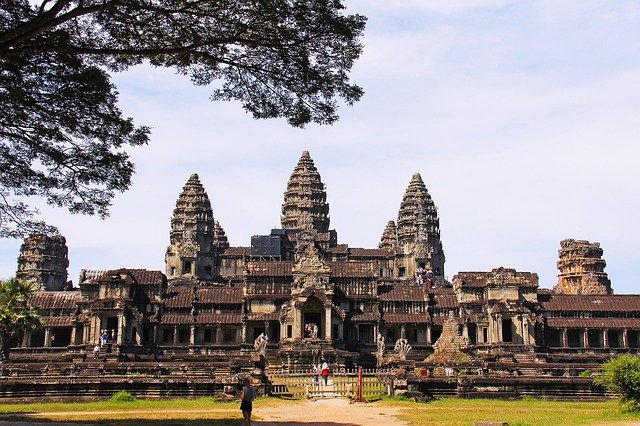Angkor Wat is one of the most important archaeological sites in South-East Asia which extends over 400 square kilometres and consists of scores of temples and hydraulic structures such as basins, dykes, reservoirs and canals, besides communication routes. But as per a new revelation, a collapse of a reservoir in a remote and mysterious city might have helped Cambodia's Angkor to gain supremacy.

The rulers and Angkor
Jeyavarman IV was an Angkorian king who ruled Angkor and during 920s, he set up a new capital at Koh Ker, about 75 miles to the northeast. The capital flourished until 944 when the son of the king was killed and the next Khmer king moved the capital back to Angkor. As per Miriam Stark, director of the Center for Southeast Asian Studies at the University of Hawai'i at Mānoa, it was a very interesting period in Angkorian history as it looks like there was serious competition for ruling.
But a recent study, published in the journal Geoarchaeology, has revealed that a water reservoir critical for large-scale agriculture in the Koh Ker area had collapsed around that time and this incident could have led to the shifting of the capital back to Angkor.
Sarah Klassen, director of the Koh Ker Archaeological Project, and a post-doctoral researcher at the University of British Columbia in Vancouver, Canada, said that this discovery has given a clear view on what was going on in the empire during that period.
To look for the history of Angkor

Compared to other empires and cultures such as Mayan and Egyptians, researchers hardly conducted deep research based on the Khmer Empire in Cambodia. But scholars like Klassen and her colleagues completed light detection and ranging (LiDAR) surveys in 2012 at Koh Ker and Angkor, including an area near a large Khmer reservoir.
In 2015, they excavated part of a chute area at the reservoir and in 2016 the team conducted research with ground-penetrating radar that showed that the blocks built to limit the outflow of water had crumbled. As per Klassen, "There were extreme flows of water leading into the dike, and the chute wasn't large enough to handle that and the whole thing broke."
The researcher mentioned that the breakdown would have caused downstream flooding and the force of the water may have damaged the agricultural land downstream. Even though the construction time of the water system is hard to find out, the team of researchers believe that it was probably built under the reign of Jayavarman IV.
It should be mentioned that further evidence suggested that the water system might have collapsed during the first or second rainy season after the reservoir was filled and that would have been the exact time when "Political control was shifting back to Angkor," said Klassen.
Even though the team could not suggest whether the collapse of the water system took place before or after the switching the capital, it was suggested that the incident contributed to the collapse of Koh Ker as a capital.
Angkor gains its attraction again
As per the researcher, the sudden rise and collapse of the Koh Ker set a series of incidents that led to the creation of Angkor Wat, which is currently a UNESCO heritage site and one of the most popular tourist destinations in the world.
It was Rajendravarman II, the ruler who moved the capital back to Angkor after the death of Jayavarman IV's son Harshavarman II. He expanded the empire at that time and built temples in the Angkor area. After his regime, other rulers from the Khmer Empire also built more temples.
It should be mentioned that while Angkor Wat was built in 12th century during the reign of Jayavarman VII, Khmer people built Bayon, Ta Prohm and other temples in the area as well as complex water management systems to control the monsoons.
Tegan Hall, a post-doctoral researcher at the University of Melbourne who has worked on Koh Ker said, "The water infrastructure system at Angkor was enormous, highly interconnected (and interdependent) and very complex, and was ultimately ruined by a series of cascading failures in response to an increase in climate extremes."









